Planting for Butterflies
2024, No. 06 – September 3
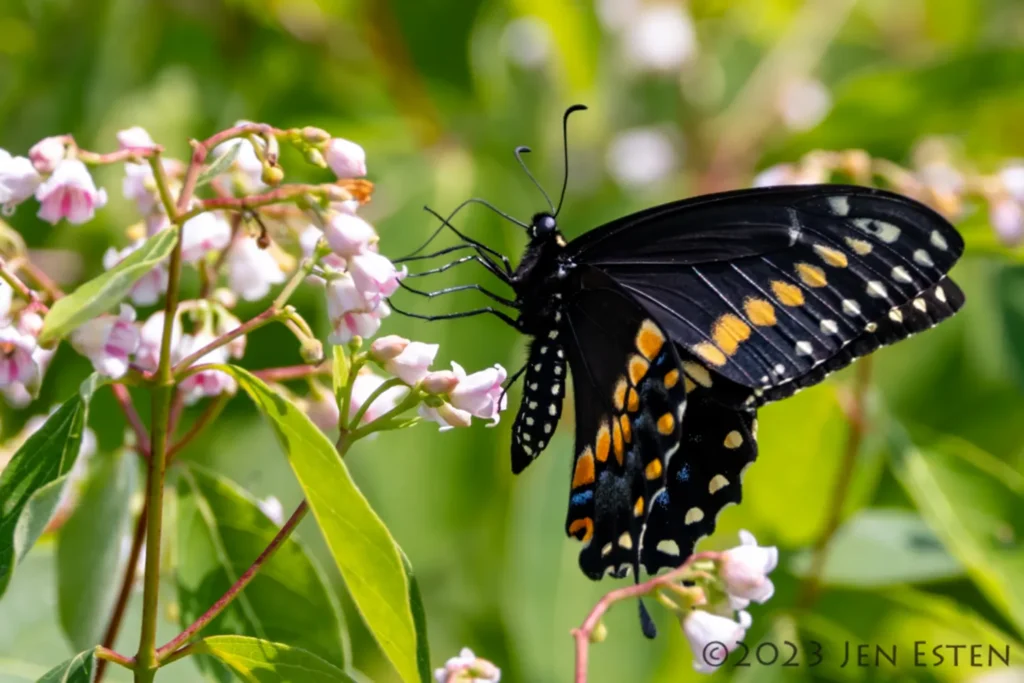
|
Black Swallowtail nectaring on Spreading Dogbane, found wild along roadsides
|
When we talk about pollinator gardens, we think of gardens that provide food and nourishment to butterflies and bees. Pollinator gardens with native plants are great for supporting biodiversity.
Some of the native pollinator plants in our yard are: Aster, Rudbeckia (Black-eyed Susan), New England Blazing Star, Butterfly Weed, Coreopsis, Golden Alexander, Goldenrod, Joe-Pye weed, Milkweed, Pearly Everlasting, Purple Coneflower, Sedum, Spotted Bee Balm, Wild Geranium, Wild Strawberry and Yarrow.
|
Butterflies and their Host Plants
|
To support our local gorgeous butterflies, we also need to consider providing their host plants. These are the plants that butterflies lay their eggs on. Caterpillars hatch and feed on the host plant. Each species of butterfly has specific plants it will use. We have tried to populate our yard with host plants as well as pollinator plants. Some have shown up on their own, others we have purchased from Spring Ledge in New London or Bagley Pond Native Perennials in Warner.
Here are some of the butterflies seen in our yard along with their host plants.

American Lady (Vanessa virginiensis)
About 2 – 2 1/2 “ wing span. We find them nectaring in our native perennial garden. They are plentiful in our yard because we grow an abundance of their host and nectar plants.They migrate south in the fall and north in the spring.

The American Lady Host Plants include Pearly Everlasting, Sweet Everlasting, Pussytoes and Dusty William.
The caterpillars create sticky webbing when they are small (right). This may be unsightly for a short time, but the plant will be back to normal in a few weeks, and you will have gained a flying jewel in your garden!
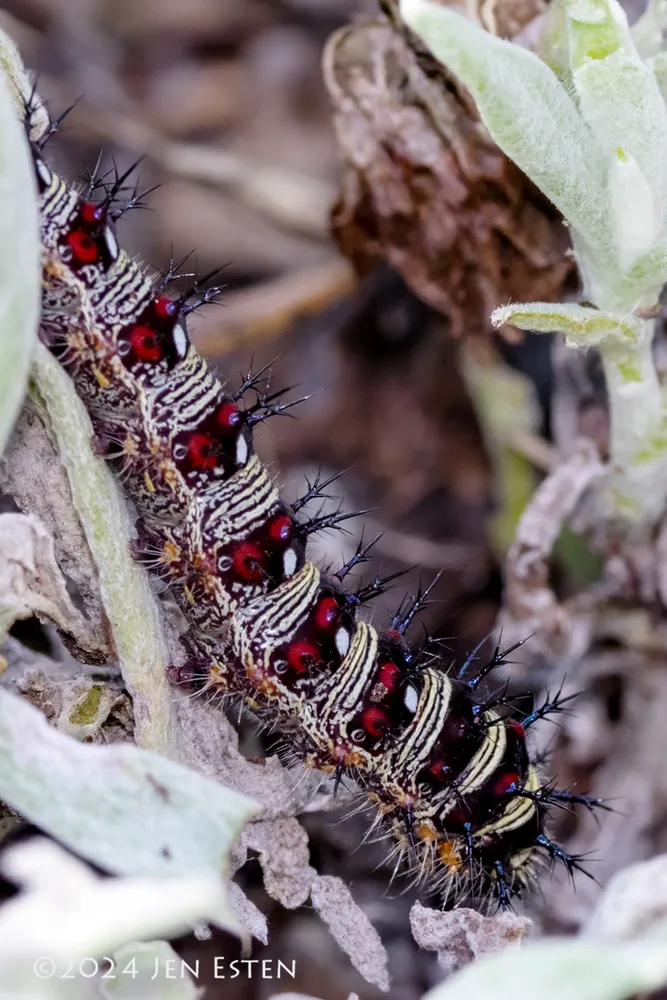 |
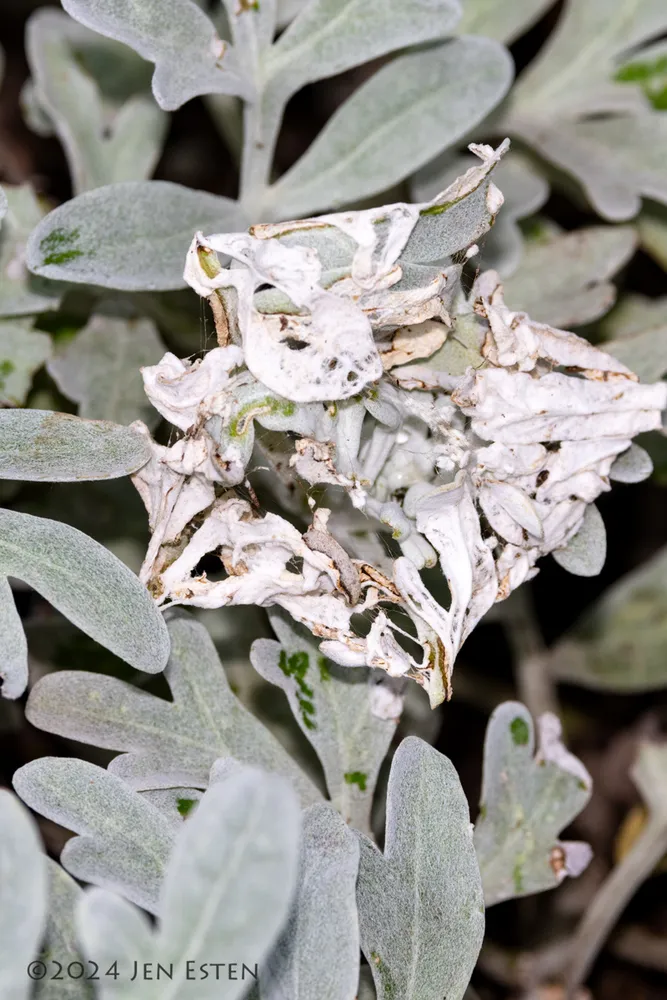 |
The American Lady Host Plants include Pearly Everlasting, Sweet Everlasting, Pussytoes and Dusty William.
The caterpillars create sticky webbing when they are small (right). This may be unsightly for a short time, but the plant will be back to normal in a few weeks, and you will have gained a flying jewel in your garden!
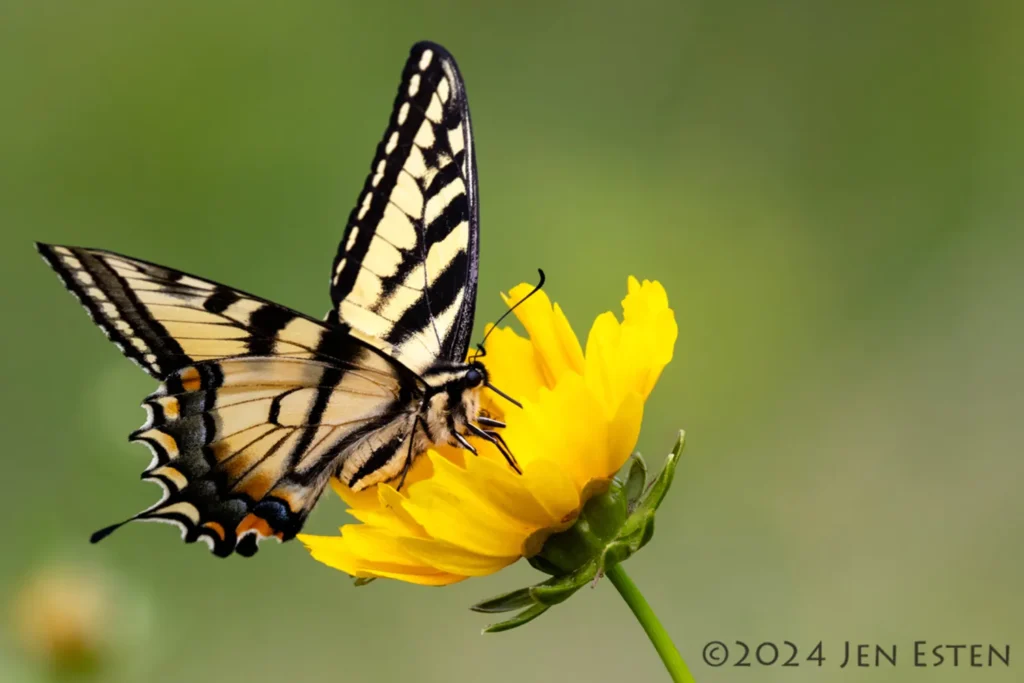
Canadian Tiger Swallowtail (Papilio canadensis)
2 1/2 – 3 1/4 inch wing span
Host plants include Ash, Cherry, Lilac and Willow
In our area we have the Eastern Tiger Swallowtail, and more often, its close relative, the Canadian Tiger Swallowtail. The Eastern has two broods (March/April and Sept/Oct), the Canadian has one – Late May to Mid-July. We are at the southern-most range for Canadian, and northern-most range for Eastern.

Black Swallowtail (Papilio polyxenes)
About 3 inch wing span
Below is the caterpillar and chrysalis. Some will overwinter in their chrysalis and emerge in the spring.
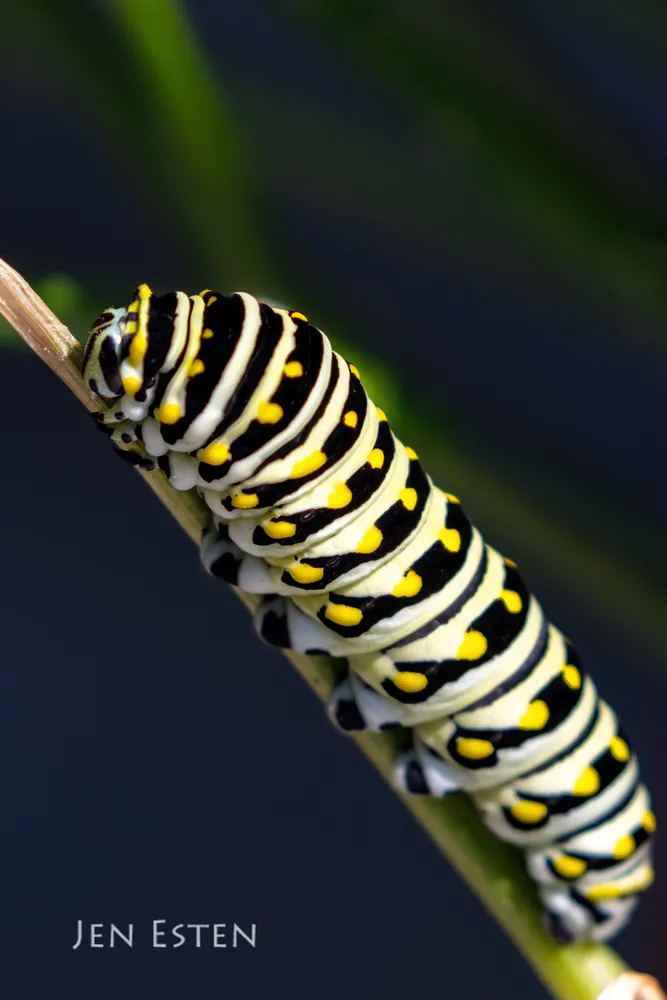 |
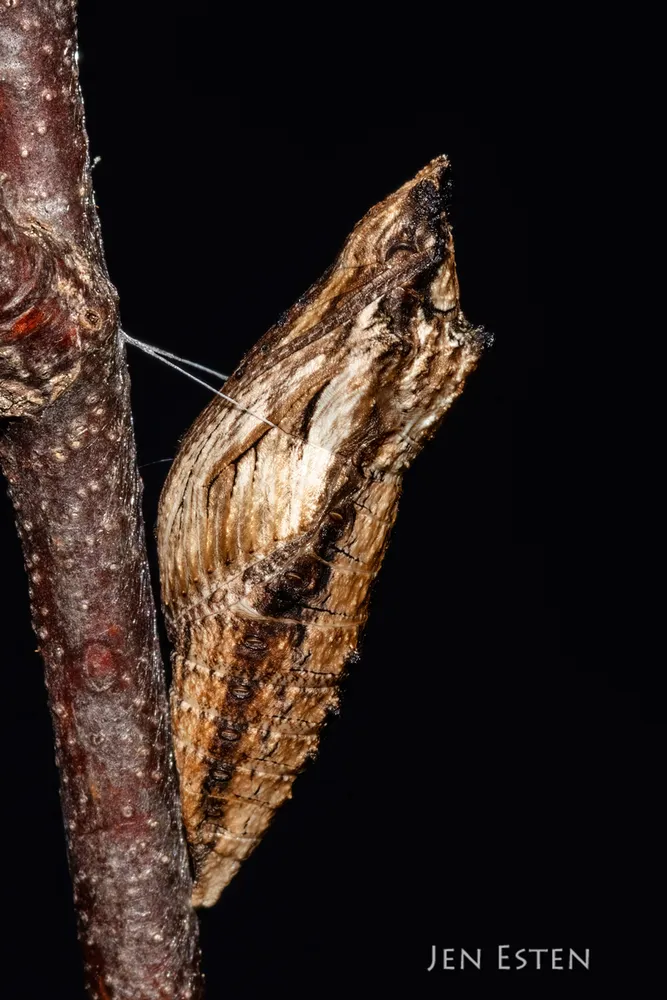 |
Host plants for the Black Swallowtail include wild Golden Alexanders (bottom Left) and Queen Anne’s Lace (bottom Right), as well as garden plants such as Parsley, Dill, Celery and Fennel.
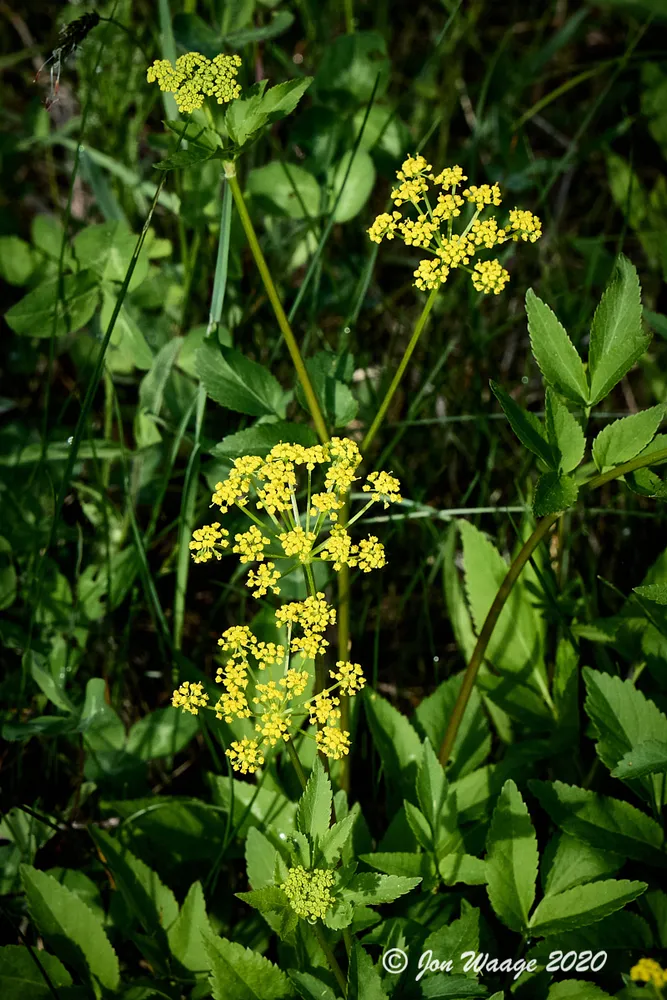 |
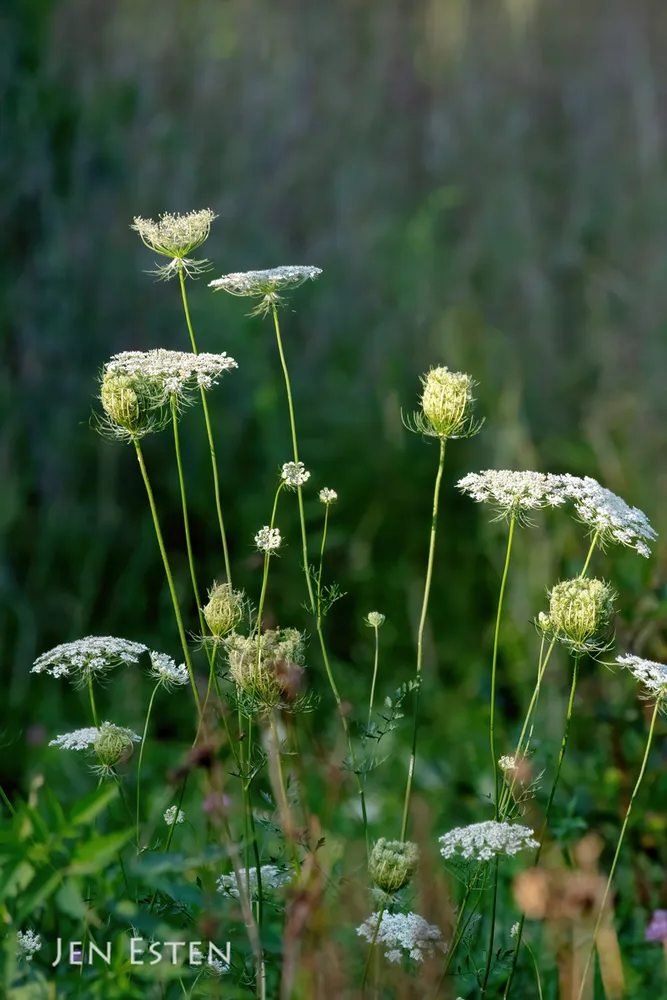 |

Eastern Tailed-Blue (Cupido comyntas)
A tiny butterfly with a wingspan of 3/4 – 1 inch. With wings folded it’s smaller than my thumbnail!
Host plants include those in the pea family, such as Vetch, Lupine and Clover, all of which are plentiful in our meadow.
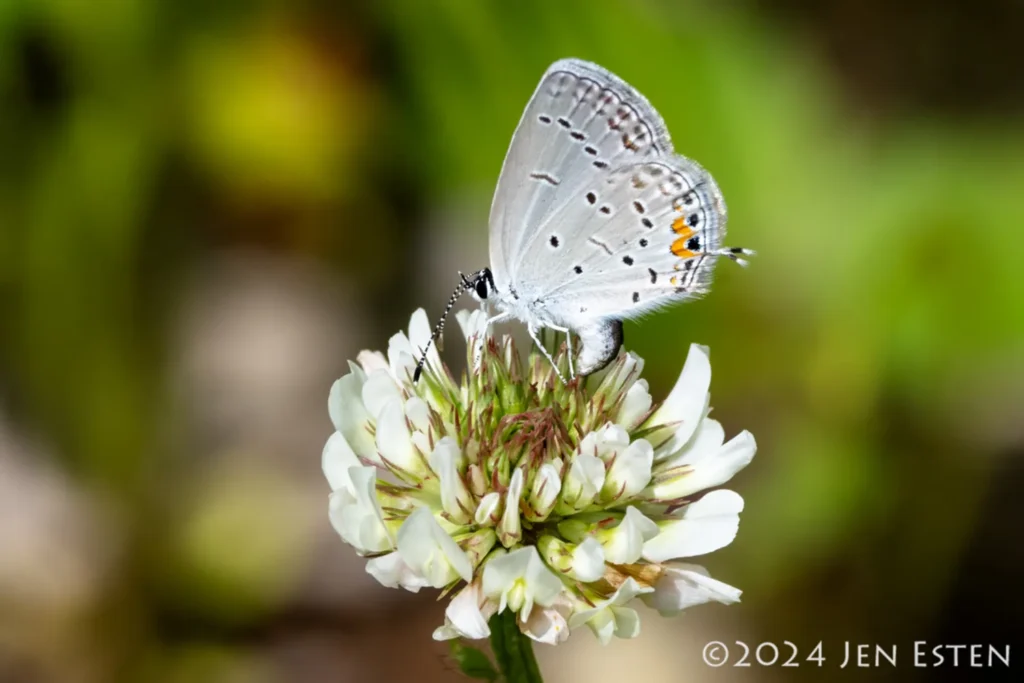
Above: Eastern Tailed-Blue laying eggs in white clover.
They are most often seen in grassy open fields, especially with clover. Getting a close look is difficult, but you might flush a tiny blue butterfly while walking through the grass.
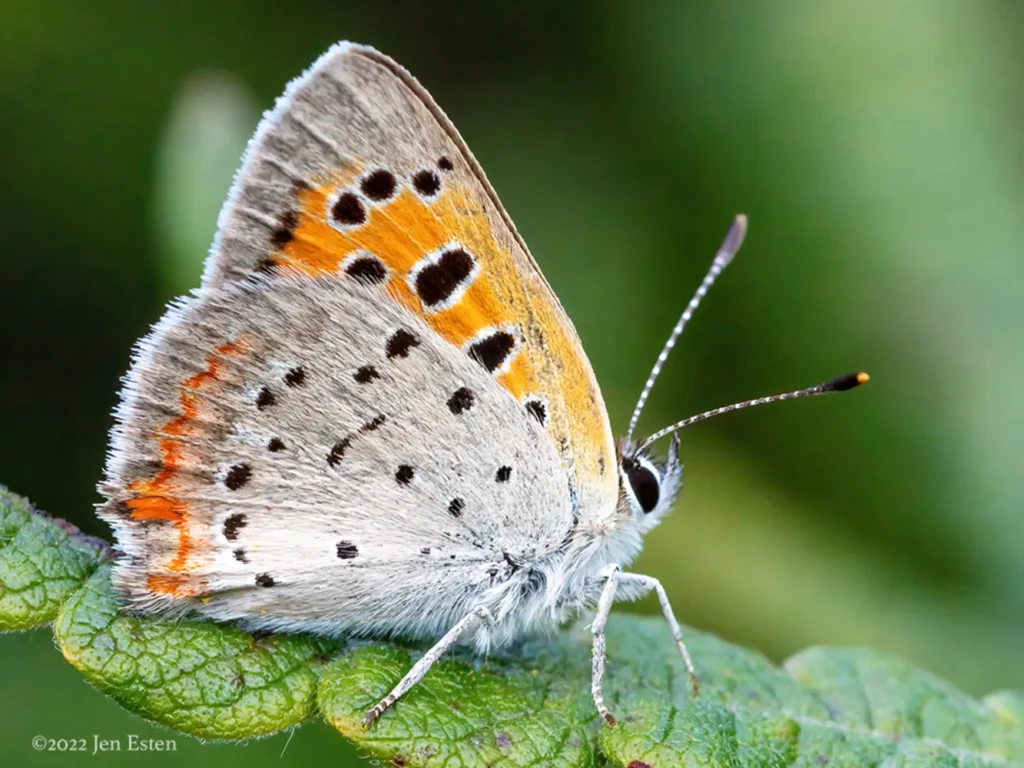
American Copper (Lycaena phlaeas)
Very small with a 1” wingspan. They frequent our perennial garden and meadow. The one below is nectaring on Aster.
Many butterflies have very different coloration on the dorsal and ventral sides of their wings. Above is the ventral view of the American copper, with the wings closed. Below is the dorsal view, looking down with wings open.
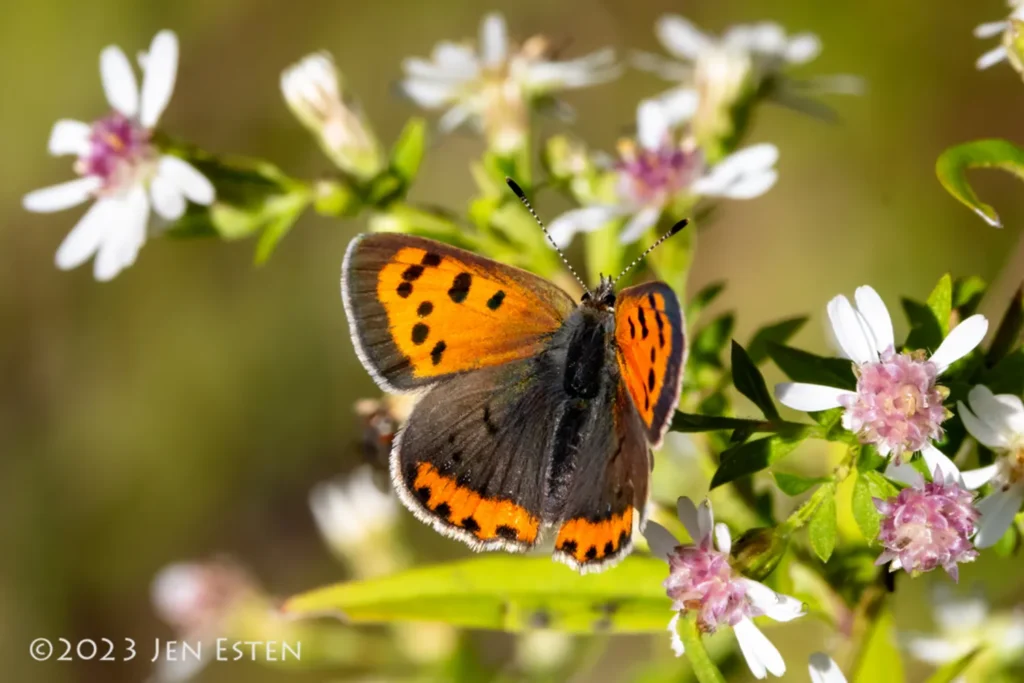
American Copper caterpillars feed on the undersides of Sheep Sorrel leaves.
This weed grows just about anywhere, on runners, creeping uninvited into our gardens. But it is host to this beautiful tiny butterfly! Thus, we tolerate patches of it in our yard.
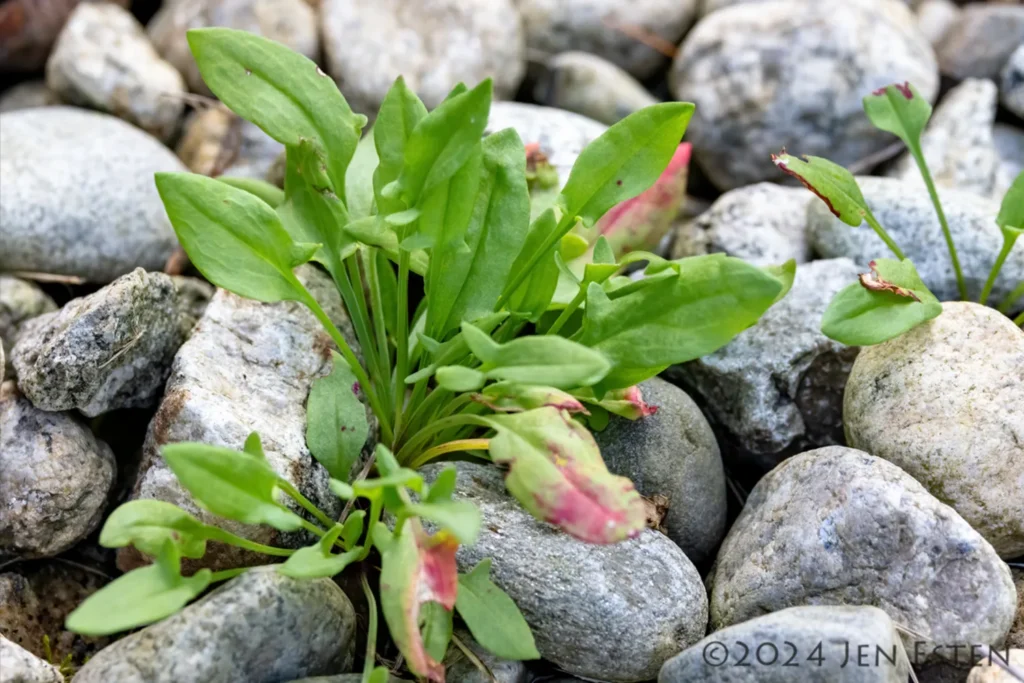
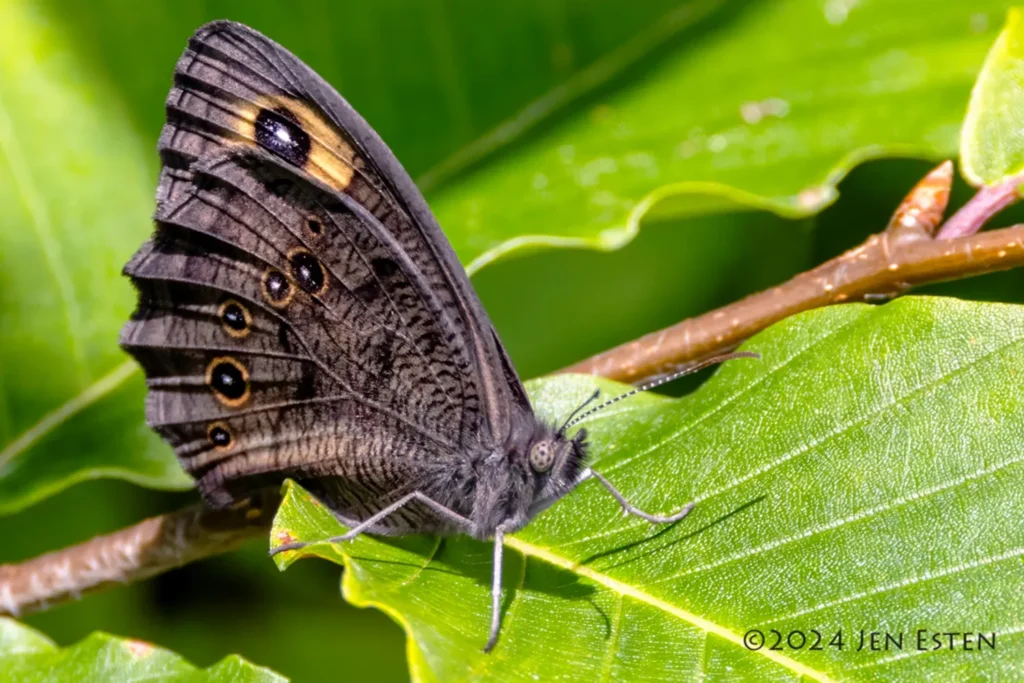
Common Wood-Nymph (Cercyonis pegala)
1 1/4 inch wingspan. We see this spectacular butterfly in brushy meadows and along edges of woods. Its large yellow eye patch on the forewing is easier to see with the wings open.
Host plants are native grasses such as Beardgrass, Bluegrass and Bluestem. Our field is full of Little Bluestem (below) but we only see a few Common Wood-Nymphs every year.
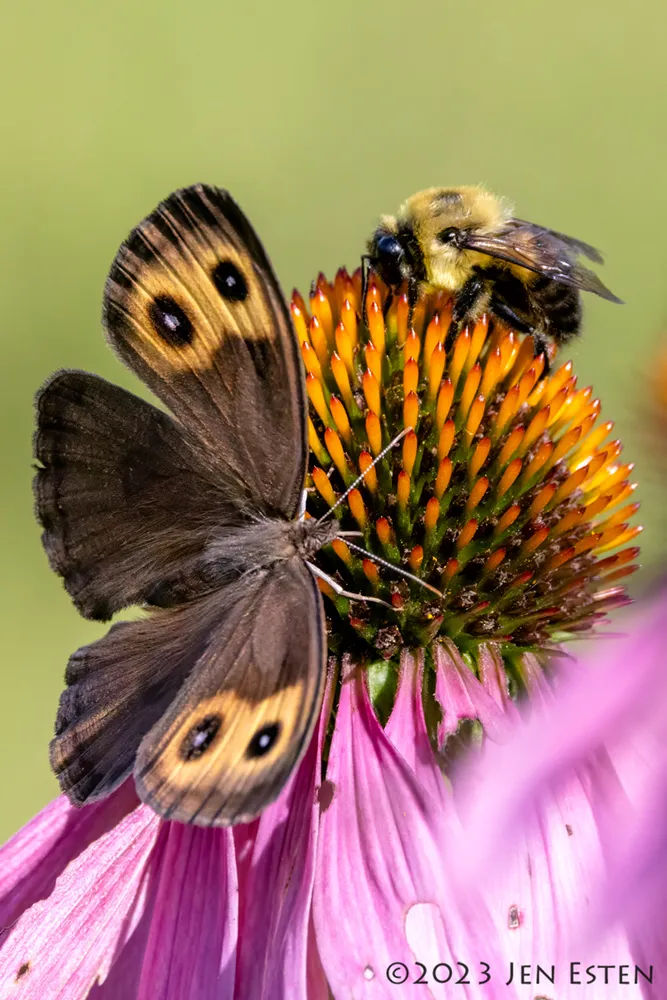 |
 |

Great Spangled Fritillary (Speyeria cybele)
Wingspan of 2 1/2 – 3 1/2 inches. Found nectaring on many of our perennials – including Cone Flowers , Joe-Pye weed and Butterfly Weed (above).
Host plants are the Violet family. Their caterpillars are difficult to find since they eat at night and hide during the day. The female lays eggs in August and September. The caterpillars overwinter and feed on new violets in the spring.


Monarch (Danaus plexippus)
Wingspan of 3 – 4 ”. An iconic creature, these marvels of nature frequent our Joe Pye-Weed, Cone Flowers, Asters and Goldenrod.
Host plants for the Monarch caterpillars are the Milkweeds [Asclepias spp.]. We have both Common Milkweed and Butterfly Weed.
 |
 |

A tiny Monarch caterpillar on Common Milkweed.

Viceroy (Limenitis archippus)
Wingspan of 2 1/2 – 3 inches. Viceroys are often confused with Monarchs, but they have a curved black band crossing the hind wings.
Host plants include Aspen, Cottonwood, Poplar and Willow.
 |
 |
Pearl Crescent (Phyciodes tharos) and Northern Crescent (Phyciodes cocyta)
They are very small with a wingspan of 1 1/4 inches .
These two butterflies are very difficult to tell apart. They are very plentiful, having several broods through the summer.
Host plants are Asters.
Several varieties of Aster have found their way to the damp areas of our yard (below).


White Admiral (Limenitis arthemis arthemis). (above)
Red Spotted Purple (Limenitis arthemis astyanax) (below)
Wingspan average of 3”. In our area their host plant is mostly Yellow Birch, Poplar and Willow. Adults like rotting fruit and flowers and prefer deciduous woodlands and forest edges – however – we see both of these beauties in our garden.
These two butterflies have complicated hybridization giving rise to confusing coloration. L. arthemis anthemis (above) has a large white band and is found from New England and the Great Lakes north into Canada. L. arthemis astyanax (below) is known as the Red Spotted Purple and ranges from New England and the Great Lakes south, as far as Florida. The coloration of the Red Spotted Purple is variable but lacks the broad white band of the White Admiral. It more closely resembles a swallowtail but without the tail. New Hampshire is in a range where these two overlap, giving rise to hybridization and variation in coloration


Question Mark (Polygonia interrogationis)
Wing span of 2 – 3 “. Host plants include Elm, False Nettle, and Nettle.
Its name refers to the small white markings on the ventral side of the wings in the shape of a question mark (below).

It has a close relative called an Eastern Comma (Polygonia comma), which lacks the dot. They are similar in appearance, and when their wings are closed, look like dead leaves.
The Question Mark below is probing the dirt with its proboscis. If you look closely you can see the white ‘question mark’ on its hind wing. This is a rather uncommon butterfly. We have only seen them in our yard a few times, puddling on our driveway.

‘Puddling’ is what some butterflies do, probing the dirt with their proboscises, seeking minerals and other nutrients they can’t get from flowers. You may have seen large clusters of Tiger Swallowtails (below) puddling on dirt roads or on sandy shores around the lake.

In addition to host and nectar plants, another way to attract and support butterflies is by providing areas where they can puddle. You can Google “puddling butterflies” to find out more about ways to provide such areas.
For information on the impact of organic and other pesticides for mosquito and tick control, click HERE
This is a link to Xerces Society for Invertebrate Conservation.
Keep in mind…if it kills mosquitos and ticks, it will kill beneficial insects as well.
We hope this newsletter will give you some ideas about plantings and other ways to attract and support butterflies.
“Happiness is like a butterfly, the more you chase it, the more it will evade you, but if you notice the other things around you, it will gently come and sit on your shoulder.” – Henry David Thoreau
Bye for now… Jon and Jen

Text and Photographs by Jen Esten and Jon Waage

